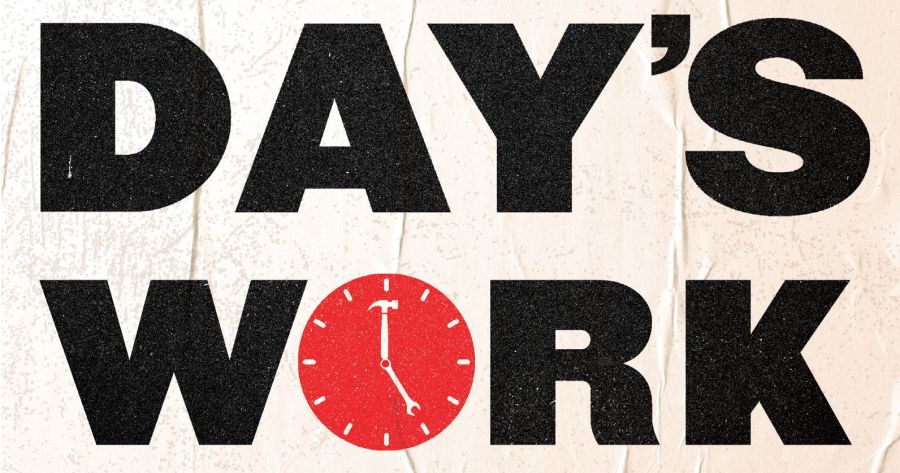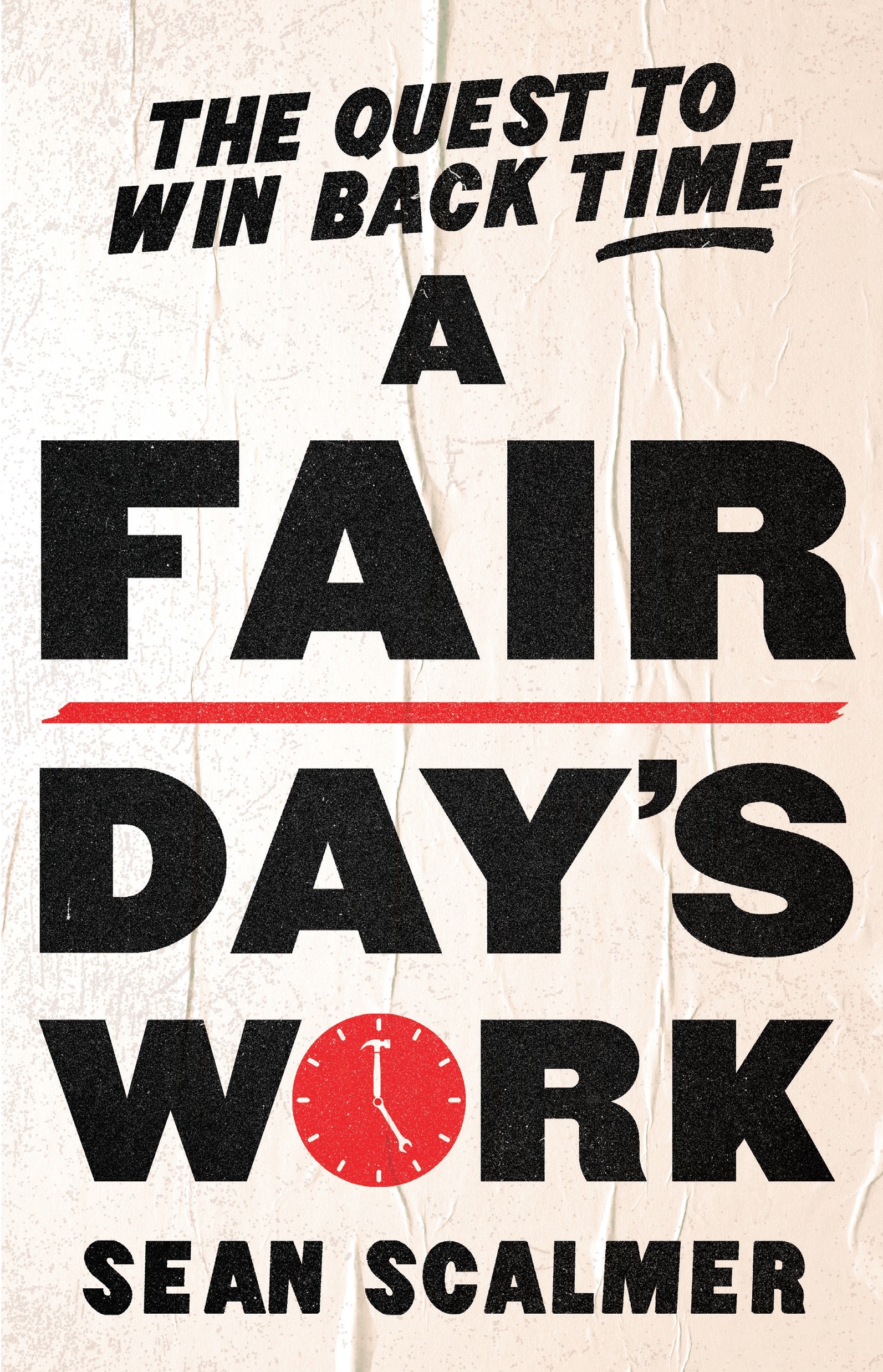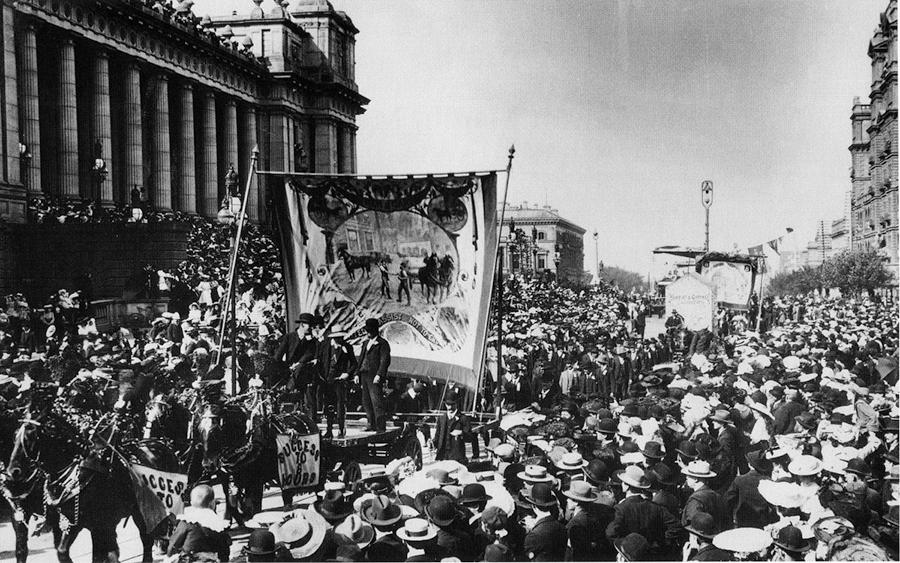
- Free Article: No
- Contents Category: Work
- Review Article: Yes
- Article Title: 8/8/8
- Article Subtitle: A history of working hours
- Online Only: No
- Custom Highlight Text:
A Fair Day’s Work: The quest to win back time is a work of history that is both reflective and urgent. It situates the long struggle of the Australian labour movement to secure reductions in the length of the standard working week – from sixty hours a week in the 1850s to thirty-eight hours a week by the early 1980s – within the contemporary fight against the resurgent power of capital, growing economic inequality, and the shrinking of the middle class. As much as it is a historical account of Australia’s leading role in reducing working hours across the world, it is also a call to action for a new generation of working people to rediscover the fight.
- Book 1 Title: A Fair Day’s Work
- Book 1 Subtitle: The quest to win back time
- Book 1 Biblio: Melbourne University Press, $34.99 pb, 192 pp
- Book 1 Cover Small (400 x 600):

- Book 1 Cover (800 x 1200):

- Book 1 Readings Link: https://www.readings.com.au/product/9780522880816/a-fair-days-work--sean-scalmer--2025--9780522880816#rac:jokjjzr6ly9m
The winning of, first, the eight-hour day, then the forty-four-hour week, and, eventually, the weekend, placed Australia at the vanguard of the global struggle for labour rights as industrial capitalism transformed the world in this remarkable era.
Too few Australians today understand and value this part of our history and, among those who do, there is an unhelpful tendency to view it as a golden era of social progress in which working people were united and the capital class indulgent of their demands.
Scalmer’s comprehensive study, therefore, serves two purposes: first, he tells a foundational Australian settlement story to a new audience, making it both accessible, through engaging prose, and relevant, by situating the history within our contemporary struggle for ‘work-life balance’. Second, and just as importantly, Scalmer uncovers the messy truth of that history and challenges some of the more self-indulgent myths that have taken hold among progressives about the ease with which labour rights and the democratic state were established over more than 100 years of struggle from the 1850s.
In fact, advances for working people throughout history have been fought for tooth and nail against a resistant capital class. Many of the arguments in the financial pages today, railing against working from home or dismissing the current union leadership’s calls for a four-day week as ‘radical’, reflect those on the front page of the Argus in nineteenth-century Melbourne when workers first demanded an eight-hour day across a six-day week.
 Melbourne eight-hour day march, 1900 (via Wikimedia Commons)
Melbourne eight-hour day march, 1900 (via Wikimedia Commons)
Within his chronological analysis, Scalmer pays attention to how arguments and tactics changed over time to reflect the dominant economic concerns of the era. He explains that in the early years of the movement, when it was led by skilled tradesmen and artisans, the plea for shorter hours was framed in terms of human rights. The famous cry for ‘eight hours work, eight hours rest, and eight hours leisure’ appealed to a notion of the full personhood of the working man. It asserted that time with family, for leisurely pursuits and for the betterment of his mind, so as to allow full democratic participation, was an essential human right and would lead to the improvement of wider society.
Yet as industrialisation took hold and Australia, like the rest of the developed world, saw the establishment of large manufactories with labour-saving machines replacing much of the work done by artisans, the campaign for shorter hours shifted in tone and tactic. The language of industrialisation, with its focus on productivity and output, was adopted by early-twentieth-century advocates of a forty-four-hour week who argued for the provision of a half-day holiday on Saturdays. These new campaigners, Scalmer explains, ‘used the new framework of profits and losses, machines and measurements to further curtail the hours of labour’.
While this tactical shift proved successful in the end, Scalmer laments the loss of ‘that richer vocabulary’, the ‘more humanistic discussion of the complex relations of work and life’ that had been the approach of the movement in the nineteenth century. By paying attention to the tactical shifts in the labour hours movement over time, Scalmer links the battles of labourists past to efforts in 2025 to further reduce the standard working week. Advocates today use the same economic jargon that emerged in the early industrial era, eschewing appeals to more humanistic concerns, with, as Scalmer goes on to show, diminishing returns.
The acquiescence to the framework of the enemy class is, Scalmer suggests, one reason why, after more than a century’s progress, Australian workers have not achieved any further reduction in the standard working week since 1983. His exposition of the loss of union power through the elimination of collective bargaining, and a shift towards securing social wages rather than reduced hours in the 1980s and 1990s, clearly implicates progressive as well as conservative governments.
It is the author’s admirable refusal to indulge in hagiography of the early pioneers that makes this work so contemporary in tone and usefulness. Yes, the determination and solidarity of working people in this far-flung outpost of the British Empire built a movement that established Australia as ‘a working man’s paradise’, known internationally as ‘the land of the long weekend’ by the middle of the twentieth century. And yet, that movement was far from perfect, its gains won in fits and starts and applied highly selectively to only the ‘worthy’ working class.
Scalmer properly celebrates these gains but he never loses sight of who was left behind. He describes, with great care, the reliance of this apparently progressive movement on the White Australia policy, which excluded migrant workers from non-English-speaking countries. This racist policy was embraced and enforced by the early labour movement, which saw foreign-born workers as a threat to their rates of pay and entitlements.
Scalmer also compares the great gains of white working-class men in this era with the brutal and inhumane treatment of Indigenous Australians, who were contemporaneously enslaved throughout the nineteenth-century colonies and in twentieth-century Australia.
Most refreshingly, Scalmer looks in detail at the ways in which the early movements for shorter working hours ignored and maligned the unpaid work of women in the domestic sphere. He traces a through-line from late-nineteenth-century attempts to include the ‘work of the household’ within the campaign for the eight-hour day to contemporary arguments around working from home and a shift to the four-day week. Scalmer considers how these measures could improve the lives of today’s working families, for whom a stay-at-home wife is increasingly rare and two incomes are needed to afford basic shelter.
When he commenced research for this book, Sean Scalmer could not have anticipated that it would be released during a renewed national debate about productivity and its role in lifting living standards. The rare good luck that sees its publication coincide with the federal government’s so-called productivity roundtable is not Scalmer’s alone; for readers to be provided with this thoughtful study and a consideration of the fair distribution of productivity gains is a timely gift indeed.


Comments powered by CComment